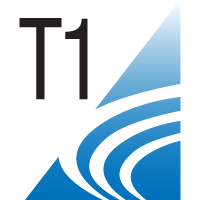Adult Diagnostic (AD)
(Re)habilitation and Counseling (C)
Amplification and Assistive Devices (AAD)
LM106 - Subjective Speech Intelligibility: An Overlooked Measure in Our Profession?
- FK
Francis K. Kuk, PhD
Director, VP-Clinical Research
ORCA-USA, WSAudiology
Lisle, IllinoisDisclosure(s): WS Audiology: Employment (Ongoing)
Lead Presenter(s)
Summary:
Our profession has always focused on objective speech testing in which speech materials are repeated (or identified among foils) by the listeners. The percent correct is reported as the objective speech intelligibility scores. On the other hand, objective speech intelligibility testing takes time to conduct. And if the objective intelligibility is to be repeated several times (such as aided and unaided testing, or aided testing among hearing aids), it may not be clinically practical. Thus researchers (e.g. Cox et al) back in the 1900’s examined the possibilities if subjective speech intelligibility, which should take less time since a perception of how much is understood is made instead, may replace objective speech testing. The consensus at the time was that on a group basis, objective speech intelligibility was similar to subjective speech intelligibility and as such, they may be useful for clinical evaluation.
In the early 2000’s Saunders et al (and later in 2020, Ou et al) examined the use of the HINT (and QuickSin in Ou et al) in a subjective manner for a different motivation. These authors postulated that some listeners may report poor speech understanding difficulties (subjective) when their speech understanding (objective) was reasonable. These under-estimators (of hearing abilities) may represent those individuals with hidden hearing loss and/or those who are not easily satisfied with hearing aids. Thus knowing if an individual shows a perceptual discrepancy between subjective and objective speech scores could help in counseling the patients to set a more realistic expectation.
Recently, we introduced the Tracking of Noise Tolerance (TNT) test as a means of measuring noise acceptance. As part of the instructions, we asked that subjects adjust the noise level so a fixed level speech stimulus would be at least >90% understandable. If subjects followed our instructions, this would have the same effect as seeking the signal-to-noise ratio (SNR) for a 90% correct criterion. In other words, the TNT test not just informs the clinician on how much noise a listener can accept, it also informs the clinician the SNR that the listener needs to understand 90% or more of the speech message, much like the SRT50 informs one of the SNR that allows 50% understanding of the test stimulus.
Thus, to validate our hypothesis we took the speech passages used in the TNT test and created sentence test materials so we can measure the subjective and objective performance-intensity (PI) functions of NH and HI listeners. Such PI functions could then be used to extrapolate the objective and subjective speech intelligibilities during the TNT tracking. Indeed, we were able to show that the valleys of the TNT tracking corresponded to a subjective intelligibility not different from 90% in both NH and HI listeners in both the aided and unaided modes. Furthermore, we were able to show that HI listeners in general, over-estimated their hearing ability and under-estimated the benefit of amplification.
In this presentation, we will share our findings and discuss means to minimize listeners’ over- and under-estimation of hearing ability.
Learning Objectives:
- List the consequences of over-and under-estimation of hearing ability
- List how the TNT test can be conducted
- List at least two tests that allow subjective intelligibility assessment

